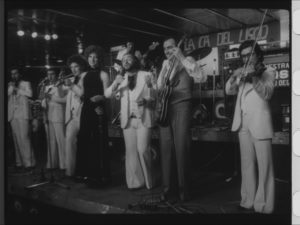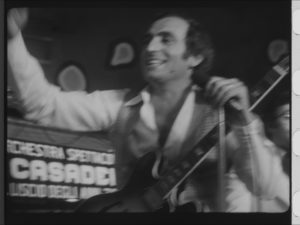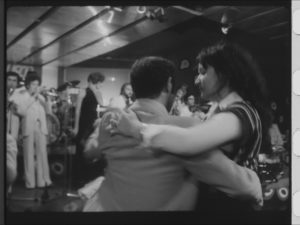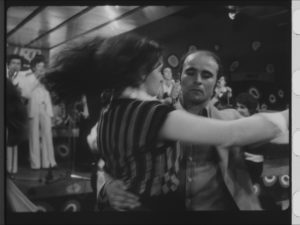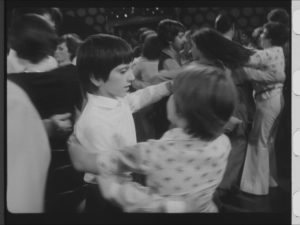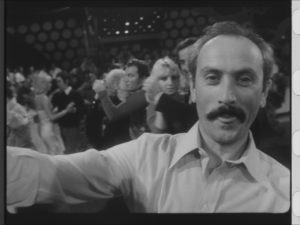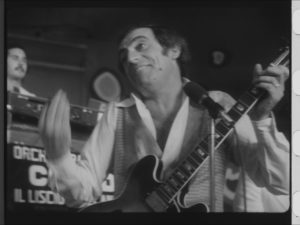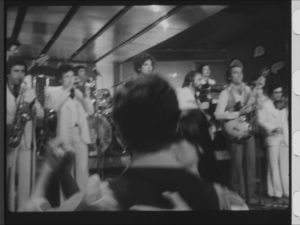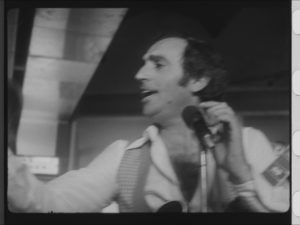Liscio on the table
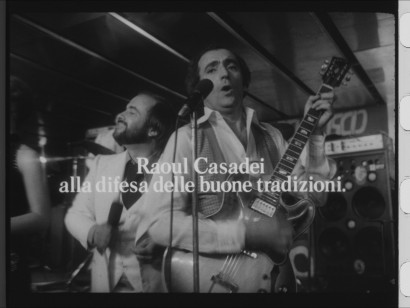
by Emmanuel Grossi
Barilla pasta had not missed a date on Carosello since the summer of 1965, from the debut of Mina under the direction of Valerio Zurlini, and every year produced one, two or even three series of commercials. However, the economic and oil crisis of the mid 1970s (the era of Austerity) upset all plans. The Company did not think it opportune to continue to invest massively in advertising for first necessity commodity goods whose prices had been standardized by the Italian Government; thus the television airing spaces that had already been bought were converted to promote rusk bread, and shortly thereafter the new Mulino Bianco bakery line.
Through the years, communication of semolina pasta had changed too: the glories of the era of Mina and the welcome presence of Massimo Ranieri were archived, and the priority was now to make the brand stand out among the many other that crowded the market, by remarking its genuine character (to take a distance from frequently occurring food frauds) and quality (by comparing durum wheat used by Barilla to the wheat used by competitors that did not hold the cooking). For the comeback on Carosello of 1975 (that was replicated in 1976), the same values were highlighted in the entertainment section, declined in music: Defending wholesome traditions.
Those where the years of folk music, that spread diffusely throughout the field, from discographic market to television (even Canzonissima devoted a round of its contest to it). The cauldron was filled with a bit of all things: dialect folk songs from oral tradition recovered through careful ethnomusicology research, work songs and social and political ones (from the female rice harvesters to the female loom workers…), war songs (from trenches to partisans…), “generically old” songs (from the end of the 1800s to the beginnings of 1900s) and merely commercial products that had nothing ancient about them but the rhythm (a plethora of tangos, waltzes, polkas, mazurkas…).
Barilla chose to mediate the various instances opting for a genre that could be traditional, but still contemporary: Liscio, ballroom dance music. It aimed at the top, engaging the unrivaled king in this field: Raoul Casadei.
Unionfilm, a production company from Milan, went to shoot directly at Ca’ del Liscio, during the fun filled and crowded concerts of the Orchestra Spettacolo with whom Raoul Casadei was relaunching the hits by his family and the long artistic history that from his uncle Secondo with his famous Romagna mia (My Romagna) arrived to the “new classics” like Amico sole (My friend the sun), Concerto popolare (Folk concerto), La mazurka del primo appuntamento (The mazurka of our first date), La mazurketta (The little mazurka)…
Those were simple and genuine Carosello shorts, filmed with a hand-held camera (which meant that dancers of all ages were filmed in close-ups on the dancing stage) mostly by television director Enzo Trapani. This was his comeback to Barilla with a series that for certain aspects was in antithesis and complementary to his previous one of 1968: from Versilia to Romagna, from the composed and highly educated public of the Bussola to the informal one of ballrooms, from the elegance of Mina to the genuine vitality of Casadei… In both cases, communication was in step with the times and with the promotional messages expresses in the endings, to which we are naturally led by the entertainments, with no jolting moves.
